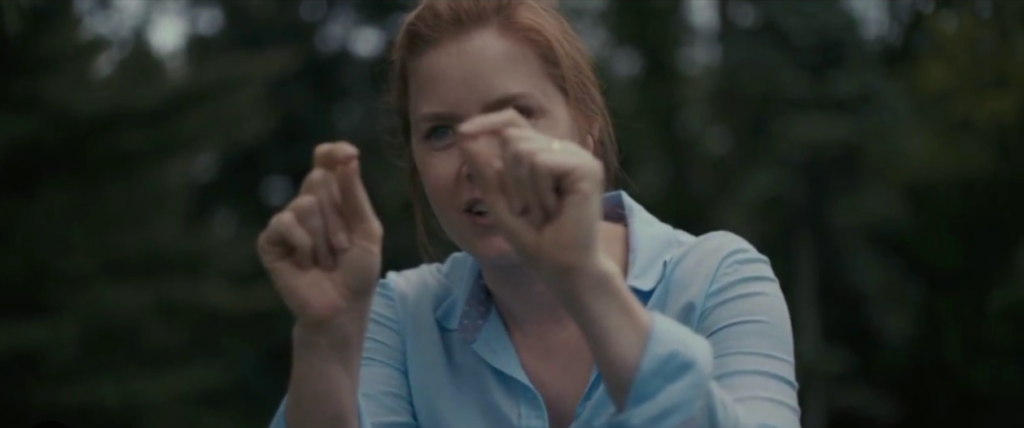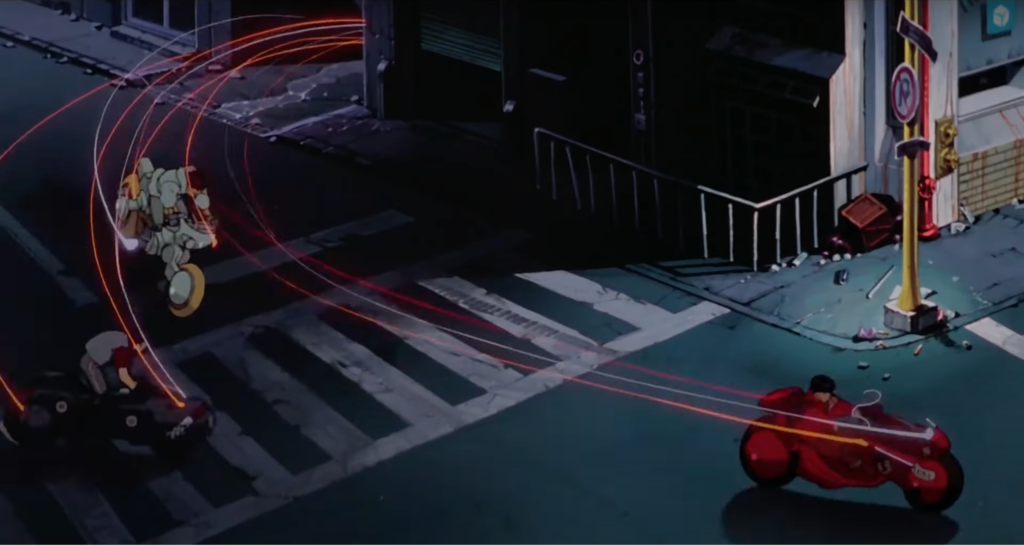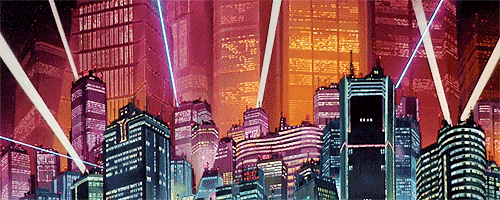Film music and cinematography triangulate your emotions
by Nguyen Nguyen
The alignment of film music and cinematography has a substantial effect on how audiences perceive emotions. There are countless films that take advantage of this effect, often in very different ways for different purposes. To start out, let’s take a look at the opening scene of Arrival. Louise, the main character speaking in voiceover, is reflecting on the memories and loss of her child and we see this from her point of view

The dark and cold color grading arouse feelings of melancholy and mental abstraction(Siddiqui). Max Richter’s elegiac strings—his famous 2004 track “On the Nature of Daylight,” expresses and thereby enhances these feelings. Upon the entrance of a child, the scene transitions to subdued and lighter color grading but the plaintive music continues. There is now a hazy contrast between the colors and the music during this part of the scene. The colors are more evocative of tranquility and comfort, while the still-elegiac and contrasting score mixes in and takes these positive feelings away. Through this mixture of music and color, melancholy becomes mourning—to use a famous essay by Sigmund Freud.
Throughout the entire scene, we perceive a variety of complex emotions through a single score and simple changes in color grading. And this effect has pushed Arrival into critical acclaim.

The basis of a film’s acclaim often derives from its delivery of emotions. But what even aids this delivery? To name a few contributors, character and story writing definitely matter. But many may overlook the impact of the score because film music (as Claudia Gorbman famously put it) is unheard. More viewers might dismiss the subtle or even drastic effects of certain cinematographic choices such as lighting or color grading. In combination with music, cinematography melds and shapes the emotional impact of films in ways that could not be done otherwise. As such color works hand in hand with music, creating sustained moods or more frequently changing emotions.
Let’s further explore how this all comes down to color and its connection with music. In the late 19th century artists and scientists discovered that some few consciously experience colors when listening to music. This experience was called music-color synesthesia, a neurological phenomenon in which listening to music involuntarily leads to the experience of colors (Ward). Some musical pieces are even intended to project colors. Synesthete and Russian composer Alexander Scriabin composed several pieces that attempt to portray color through music and his perhaps most famous work in this regard is Prometheus: The Poem of Fire, Op. 60 (1910) which includes a clavier à lumières or “Chromola” (a color organ).
To be sure, the music-color connection doesn’t begin or end with synesthetes. Nonsynesthetes may also have similar experiences. As Kelly Whiteford and colleagues have has shown, in a study using a series of surveys and music samples ranging from different genres, that associations are made between colors and certain genres of music The tempo and key (major or minor) were recorded as well as the valence and arousal of the participants’ emotions. One finding was that participants associated yellow colors with faster music in major mode. These connections appear to be mediated by emotions. For example, happy sounding music is associated with happy looking colors. The pairing of these “happy” stimuli emphasize positive emotions. When music and color converge on the same emotion, they intensify it. Beyond being redundant, music and color create complex moods together. These effects are especially common in film.
In addition to being used in Arrival, both of these effects appear in the opening scene of Katsuhiro Otomo’s iconic anime feature AKIRA (1988). The film is a critique of humanity, where the central character Kaneda embarks on a journey to save his friend, Tetsuo, from a government project (Tangirala). To color this critique, the opening scene is canvased with dark metropolitan shades and accenting neon orange and red hues.

The beginning of the clip features more of those dark shades and rubble lying around and a dystopian, dreary, atmosphere emanates from the picture. To create this feeling of dread, the music and picture converge at a point of chaos and dismay, magnifying their impact. When the colors change as Kaneda and his friends are driving through neo-Tokyo, however, the emotions of the music and color start to diverge.

The brighter color grading within the shots of the skyline evokes urbanity, vastness, and a still lingering sense of unease given the beginning of the clip. But this time, the music and colors diverge: the tribal-esque congos in the score adds a societal aspect to the scene placing emphasis on humanity. Combined with the colors, the diegetic music subtly immerses the viewer into a somewhat chaotic world by portraying neo-Tokyo as an urban “jungle”(Zhang). The cinematographic and musical choices neither strengthen nor weaken each other. Instead, they compound like adjectives to project a very precise and complex emotion. A feeling that isn’t just chaos. It’s not just neo-Tokyo being run down by biker gangs. There’s more to it and we wouldn’t know without layering the colors with music. We feel an alluring sense of trepidation.
These examples display the powerful effect of aligning music and colors in film. But how do you know what colors to use given a score, or vice versa? According to Whiteford, for directors, intended valence and arousal levels can lead to certain colors. If the story calls for high valence and arousal emotions, the director can look towards bright reds, yellows, or oranges. Intuitively, low valence and arousal emotions will lead them to dark gray and blue colors. However, as soon as the intended emotion becomes more complex, capturing it starts to get difficult. But meeting this challenge is what separates good and great directors. The intensification of emotions through appropriate use of colors and music creates vicarious experiences generally resulting in critical acclaim.
Come back to the powerfully moody beginning of Arrival and Max Richter’s “On the the Nature of Daylight” recently described by Alex Ross (music critic at The New Yorker) as a “ six-minute juggernaut of wistfulness” — a perfect example of Richter’s “doleful minimalism.” Wistfulness is a complex emotion, more sad, but it does have a tinge of happiness, a cousin of nostalgia that is more happy (because of the nice memories) tinged with sadness about the unrecoverability of the past. The medium for turning melancholy to mourning is the complex mood of the music combined with color.
Pictures are able to create somewhat vicarious experiences on their own. In art, colors give direct and intuitive feelings and attempt to recreate something as close to an artist’s imagination as possible as researcher Qiurui Wang has shown in a study on emotion arousal. Music has a similar story. This time, the artist’s or composer’s imagination is imitated through musical theory. Separately, music and color do not nearly create the same vicarious experience compared to if they were paired together. Watch the opening scenes again, this time on mute. Then play them again, this time without looking at it. The difference in experience is extremely apparent. And we don’t realize until we isolate the stimuli.